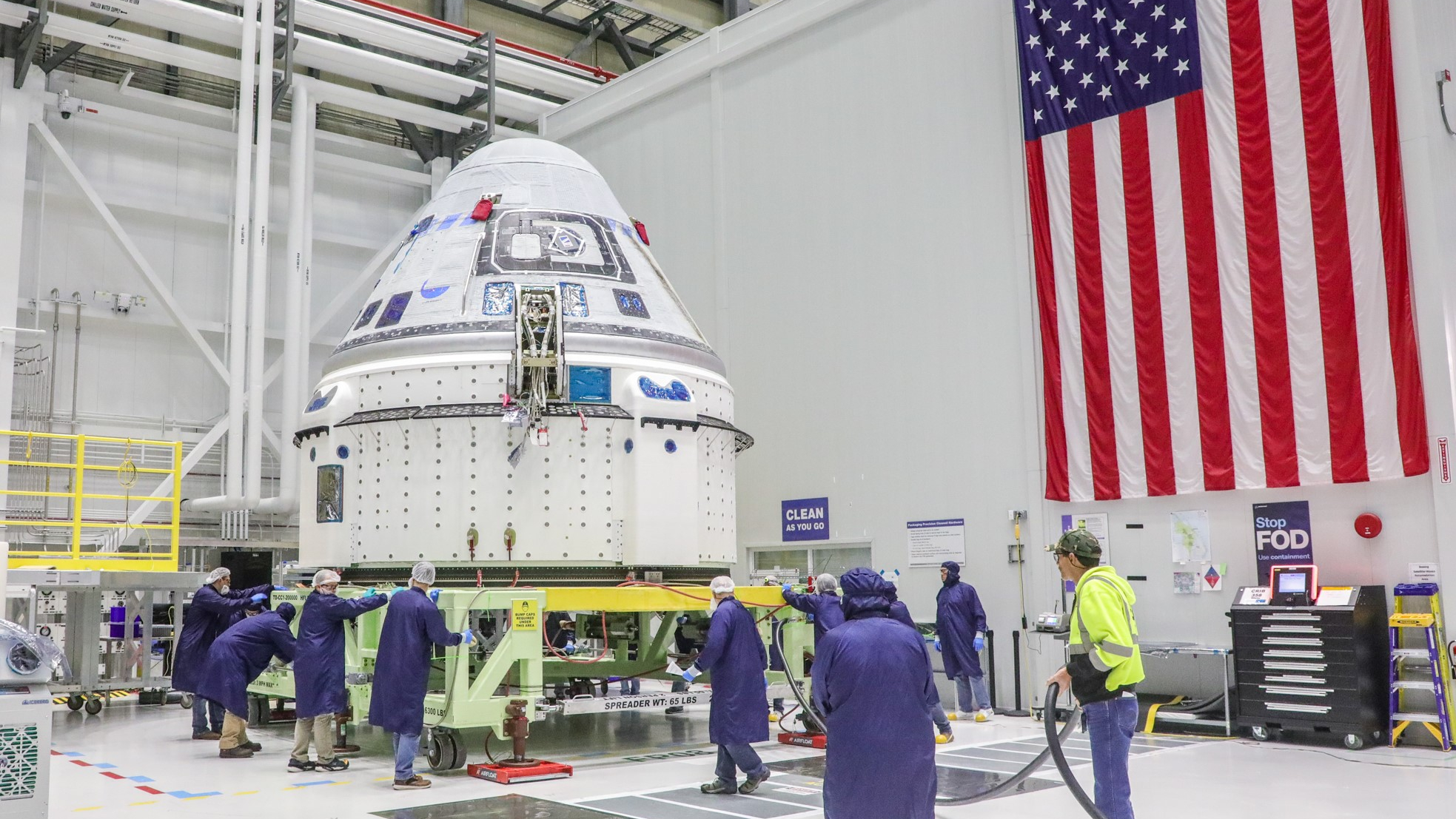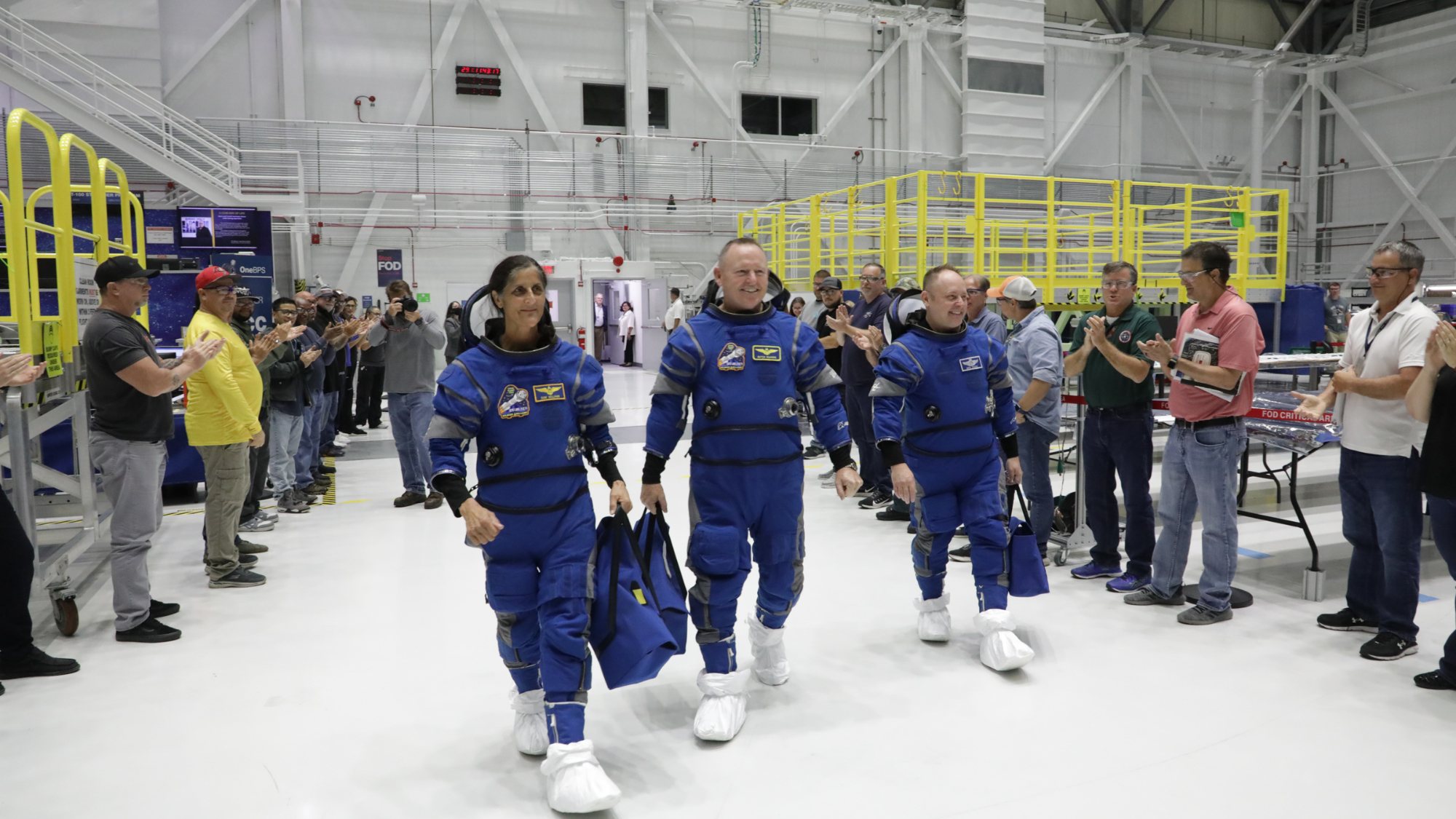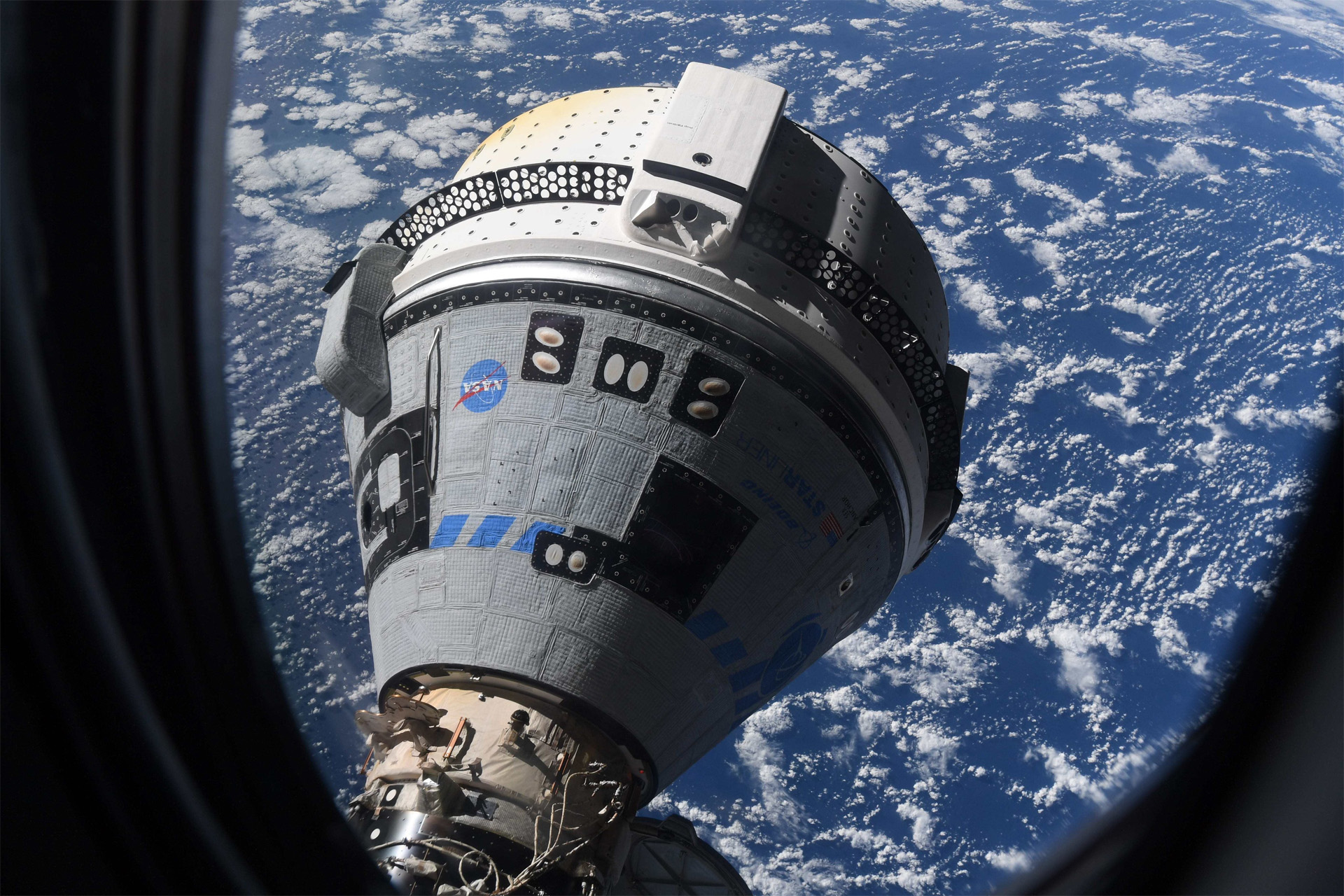Boeing delays 1st Starliner astronaut launch for NASA indefinitely over parachute, wiring safety issues
Boeing's first Starliner astronaut flight was scheduled for July 21. It won't fly this summer, but a fall launch is 'feasible.'

Boeing is standing down from the first-ever crewed launch of its Starliner astronaut capsule for NASA, possibly indefinitely, due to safety issues with the spacecraft's parachutes and wiring that were discovered last week.
The Starliner astronaut launch, already years behind schedule, was most recently targeted to launch two NASA astronauts to the International Space Station on July 21. Now, it likely won't launch at all this summer, and may not get off the ground this year.
"It's feasible, but I certainly wouldn't want to commit to any dates or timeframes," Mark Nappi, Boeing Starliner program manager and vice president, told reporters in a press conference Thursday (June 1). "We need to spend the next several days understanding what we need to go do to solve these problems."
Related: Starliner: Boeing's next-generation spaceship for astronauts
Two major safety issues are driving the latest delay, both of them discovered last week during in-depth reviews of Starliner to certify the spacecraft for crewed flight, Nappi said.
First, Boeing engineers discovered that the "soft links" used on the suspension lines of Starliner's three main parachutes have a failure load limit that is actually lower than previously thought. It turns out that those links, which secure the parachute lines with their anchor tethers on the capsule, cannot handle the load of Starliner if one chute fails. Being able to land safely with two of three chutes is a safety requirement for NASA, Nappi said.
The second safety issue Boeing found pertains to the protective tape covering the wiring harnesses throughout the Starliner capsule. That tape, Nappi said, is flammable and there are "hundreds" of feet of it inside Starliner.
Breaking space news, the latest updates on rocket launches, skywatching events and more!
"It's highly unlikely that we would go in and cut this tape off," Nappi said, adding that doing so would likely cause more potential damage. "So we're looking at solutions that would provide for essentially another type of wrapping over the existing tape in the most vulnerable areas that reduces the risk of fire hazard."
Boeing's latest Starliner delay follows a string of setbacks for the spacecraft. In December 2019, Boeing's first uncrewed test flight of Starliner failed to reach its proper orbit and could not rendezvous with the International Space Station as planned. It ultimately had to land earlier than intended.
A follow-up NASA investigation ultimately tasked Boeing to make 80 different corrective actions to address safety and other issues with the Starliner spacecraft. The company also had to launch a repeat uncrewed test flight, which successfully reached the space station in May 2022 after its own series of delays over valve issues. The flammable tape issue and the parachute soft links issue were both present on that flight, but the mission was a success, NASA officials said.
Meanwhile, two NASA astronauts — Sunita Williams and Butch Wilmore — have been waiting and training to fly Starliner's first crewed flight, called Crew Flight Test. At the start of the year, that test flight was targeted for February, but it has steadily slipped later and later in the months since. In 2021, two other NASA astronauts originally assigned to fly on Starliner, Nicole Mann and Josh Cassada, were reassigned to fly on SpaceX's Dragon so they could complete their missions. Both have since done so.
In a recent meeting of NASA's Aerospace Safety Advisory Panel, experts raised concerns over Starliner's readiness, particularly its parachute certification since the system flown on the uncrewed test flight was not certified for crewed flight, according to a SpaceNews report.
Steve Stich, NASA's Commercial Crew Program manager, said the entire team feels the pain of yet another delay.
"I would say everybody is a bit disappointed," Stitch told reporters Thursday, adding that Boeing and NASA engineers discussed the delay together in a meeting this week. "But you could see people ready to go roll up their sleeves and go see what the next steps are."
Boeing is one of two commercial companies picked by NASA to fly astronauts to and from the International Space Station through multibillion-dollar fixed-cost contracts with agency's Commercial Crew Program. Due to those fixed-cost agreements, Boeing likely is responsible for any additional costs due to the delays.
NASA's second pick for commercial crew flights is SpaceX, led by Elon Musk, which has been launching astronauts to the station on its Falcon 9 rockets and Dragon capsules since 2020. To date, SpaceX has launched seven crewed flights for NASA and three private flights for customers, most recently the Ax-2 commercial flight to the station for Axiom Space that landed back on Earth on Tuesday (May 30).
The traffic to and from the International Space Station is tightly packed over the next few months, Stich said, with crew arrivals, departures and cargo missions to the orbiting lab. If Boeing is able to solve its parachute and wiring issues in the next few months, the next window to fly the Starliner crewed flight will be in the fall, he added.
Boeing is on the hook for at least seven crewed flights for NASA, including the Crew Flight Test and six operational astronaut missions, as part of its NASA contract. Despite the repeated delays, Nappi said Boeing remains committed to its Starliner spacecraft and fulfilling its NASA obligations.
"We've been talking about the future of Starliner and how we're going to move forward," Nappi said. "We know that there's growing pains in developing vehicles and flying vehicles ... This is just part of the business to have these kinds of issues."
NASA wants to have two different spacecraft available for astronaut flights so it is not dependent on a single company to fly astronauts in space, Stich added.
"NASA desperately needs a second provider for transportation," he said. "Our ultimate goal is to have one SpaceX and one Boeing flight per year rotate up to the station."

Tariq is the award-winning Editor-in-Chief of Space.com and joined the team in 2001. He covers human spaceflight, as well as skywatching and entertainment. He became Space.com's Editor-in-Chief in 2019. Before joining Space.com, Tariq was a staff reporter for The Los Angeles Times covering education and city beats in La Habra, Fullerton and Huntington Beach. He's a recipient of the 2022 Harry Kolcum Award for excellence in space reporting and the 2025 Space Pioneer Award from the National Space Society. He is an Eagle Scout and Space Camp alum with journalism degrees from the USC and NYU. You can find Tariq at Space.com and as the co-host to the This Week In Space podcast on the TWiT network. To see his latest project, you can follow Tariq on Twitter @tariqjmalik.


